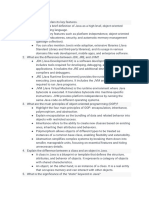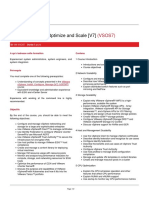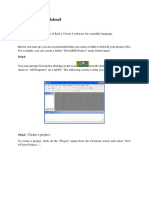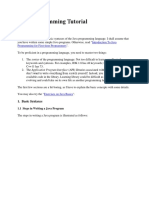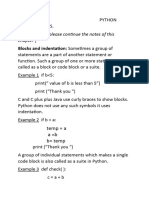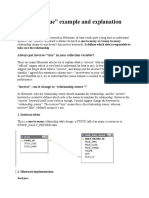0% found this document useful (0 votes)
29 views4 pagesJava Ch1 Ch2 Short Answer Answers
Java is a high-level, object-oriented programming language originally named 'Oak'. Key features include platform independence via JVM, object-oriented programming, and automatic garbage collection. The document also covers various concepts such as JDK, JRE, control statements, classes, objects, and security in code execution.
Uploaded by
remadanabdi03Copyright
© © All Rights Reserved
We take content rights seriously. If you suspect this is your content, claim it here.
Available Formats
Download as PDF, TXT or read online on Scribd
0% found this document useful (0 votes)
29 views4 pagesJava Ch1 Ch2 Short Answer Answers
Java is a high-level, object-oriented programming language originally named 'Oak'. Key features include platform independence via JVM, object-oriented programming, and automatic garbage collection. The document also covers various concepts such as JDK, JRE, control statements, classes, objects, and security in code execution.
Uploaded by
remadanabdi03Copyright
© © All Rights Reserved
We take content rights seriously. If you suspect this is your content, claim it here.
Available Formats
Download as PDF, TXT or read online on Scribd
/ 4





